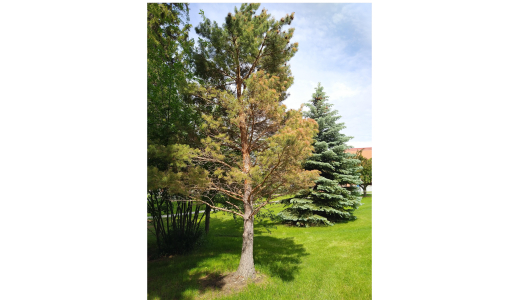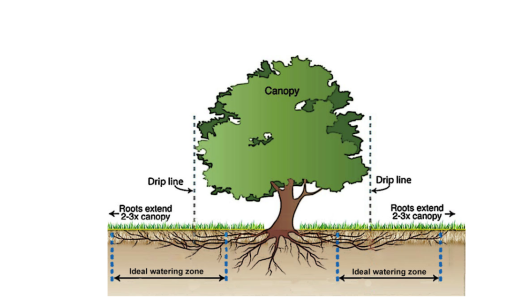
Stressed Trees and how to take care of them this growing season
We saw a significant amount of winter injury in our trees and shrubs throughout Montana this year (especially in our evergreens, but also in deciduous trees such as aspen, honey locust, and many others), and some of these landscape plants are still, albeit slowly, recovering. A combination of warmer fall temperatures last October, followed by a cold snap that led right into a very cold and long winter season created a perfect storm to challenge even some of our hardiest plants. In addition, a cool and wet June has followed, which has created additional challenges.
Many of us are also seeing a delayed leafing out in our landscape trees and shrubs this year- and in some cases, this can cause uncertainty regarding whether a tree is healthy, and if it will bounce back from a difficult winter. Trees that experienced winter injury and damage (which includes drying out of narrow and broadleaf evergreen foliage, sunscald, vole and deer feeding damage, damage and dieback to buds and sometimes entire branches) are stressed. Sometimes stressed trees can produce unusual growth such as excessive seed production and smaller leaves. Stressed trees can also be more susceptible to other pest and disease issues, so care should be taken to make sure that they are getting everything they need to recover from these stressors: and many times, this often means that less is more.
 A stressed tree showing symptoms of winter injury. |
Make sure your trees and shrubs are getting plenty of water, and give them time to recover. When watering, focus around the drip-line (the circumference of the canopy), where most of the active roots are located, and not just at the base. Do not fertilize any trees that are recovering from winter injury, unless there is also evidence of nutrient deficiency. It is best to let these trees focus their energy on recovering, as opposed to pushing out new growth.
 Illustration of the ideal watering zone from Trees for Missoula (https://www.treesformissoula.org/watering-trees) |
If your trees and shrubs are putting out new growth already, just continue to take care of them. If your trees are looking a bit sparse in terms of foliage, give them time- it can sometimes take several months to bounce back from an especially difficult winter. You can check to see if there is living tissue within the bare branches by doing a "scratch test" with a pocket knife to see if you see green cambium underneath, or if it looks dry and brownish (the latter indicating the branch is dead). Prune out any dead or damaged material (by cutting back to a live bud or branch union). If there is living tissue, it is possible for the tree to still put out new growth, so I like to discourage people from making decisions to remove non-hazard trees for at least a year. Hazard trees, however should be assessed by ISA Certified Arborists as soon as possible to prevent any injury and/or damage to people and property.
You can also set your trees and shrubs up for more success in the future, by reducing practices that can impair their ability to make it through a difficult winter season. Avoid fertilizing in the late summer and fall and excessive pruning late in the growing season (because new growth is more susceptible to injury and dieback). Make sure that you harden off your trees and shrubs in the fall (by tapering watering). Evergreen trees should be watered into the fall, and sometimes during dry and warm winter months as well. Wrap thin and dark-barked (especially younger) trees with tree wrap in the fall to prevent sunscald, and be sure to remove these wraps in the spring.
If you have any questions about the health and care of your trees and shrubs, reach out to your local Extension Offices for more information.
Abiya (Abi) Saeed
[email protected]